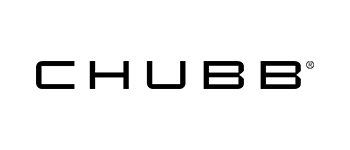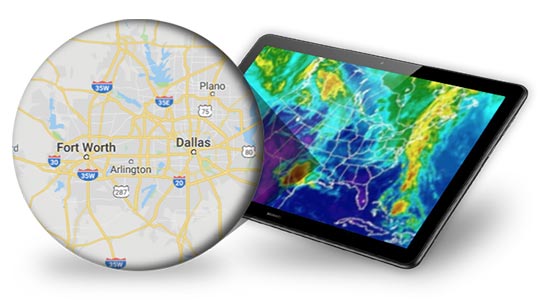24/7 Emergency Services
February 2018:

In previous issues of Contents Solutions, we have written about how the contents pros deal with the aftermath of major conflagrations. Everything from how they get fire retardants (dropped from helicopters and planes) out of client’s homes - as they are seeing in California right now, to the silt-like ashen dust that was still insinuating itself into high rise apartments in New York months after 9/11 attack.
Perhaps not too surprising, when others are fleeing such disasters, contractors often converge on areas of need - but not all of them are trained or equipped to perform the restorations well.
How does an adjuster or agent know they have a top notch team? Well, obviously the company’s reputation (testimonials) and credentials (training certificates and other electronic forms of proof) will certainly be a good foundation for your selection. But in the final analysis, performance on the job is where insurance professionals will find the best evidence that they have a well trained and equipped crew working for them.
Actually, just a few minutes of observation may well tell you all you need to know. Did they turn off the HVAC system (to keep it from becoming contaminated)? Do they have at least basic filtering masks to protect themselves from inhaling smoke particles? Soot is composed of microscopic carbon atoms which can enter their system through eyes and lungs - every contents manager knows this.
Often the pros will wear disposable (think “Tyvek”) coveralls and will have gloves to protect themselves from the chemicals and soot they encounter as part of the restoration process - some companies use TSP, a very strong cleaning compound that can be pretty hard on humans, So, others have been using biodegradable degreasers and “chem sponges” (sponges that work remarkably well for removing soot but actually have no chemicals in them at all).
Even so simple a thing as a “soot” sponge (also called “dry cleaning sponges”) can be a quick tip off as to whether you have a professional team or some untrained “day workers” picked up at a hardware store and told, “Get the soot off that wall.” The true professionals will have specialized sponges that were created for the job, the amateurs will more likely be using paper towels, rags and anything else that is cheap and readily available - but they won’t be able to perform as well as a pro with the right tools.
And if you see a front line worker pushing a vacuum brush into the fabric of a couch or drapery in order to get deep into the fibers with the intent of getting all the soot and ash out - he (she) is not a professional. The contents specialists will never allow the vacuum attachments to touch the fabric - they hold it slightly above the article to be cleaned and allow the powerful suction of a grade machine to pull the particulates free.
Have a quick look at the workers you just hired. It won’t take long to know whether you have real contents pros - that will save your company a small fortune — or a group that is going to cost the carrier a great deal before a job is over.
WHEN TIME RUNS OUT ON A CONTENTS JOB
A recent publication from the Institute of Inspection Cleaning and Restoration Certification says in part, “If a professional isn’t hired to clean smoke and fire damage, the costs for restoration will skyrocket after a few weeks. Metals may need to be replaced, carpet will permanently discolor and glass may be severely etched, which will necessitate replacement. It will also become apparent that the odors caused by the disaster may still be present and intense enough to be distracting. Because ash is acidic, the longer it takes to hire experts, the more destruction it will cause.”
Time is never on the contents pros’ side in these matters. The acids produced when moisture mixes with ordinary ash can destroy the delicate circuits in computers and television sets and penetrates such fragile mechanisms with surprising ease.
Experts estimate that 72 hours is the best that can be hoped for before the damage is permanent. But the pros have products and tools that can neutralize the acids, wash away soot and minerals from fire hose water, and even encapsulating deodorizers that can follow the smoke odors into tiny nooks and crannies, in order to counteract them.
There is no one better trained or better equipped than the contents pros to tackle the challenges of extensive smoke and soot remediation.
THE RIGHT SOLUTIONS TO SAVE CARRIERS MONEY
When the contents teams enter a home or office that is affected with smoke contaminates, one of the first things they do is to locate the source of the odors. Ash residue can be spread from room to room by the simple act of opening a door, or by the demolition crew tearing out charred walls and ceilings.
So the contents pros do their level best to isolate the burned items, remove them and seal off unaffected rooms and items We have even seen front line workers cover every exposed item in several rooms (i.e. Tables, chairs, couches, beds, large televisions, etc.) with plastic sheeting, then seal the edges with tape so that as workers pass through the rooms, nothing more is contaminated.
All this saves massive sums for the carrier by reducing cross contamination.
Over time ash pulls moisture from the air and may form in layers creating a “lacquer-like consistency,” according to the IICRC, that can only be treated with professional grade detergents which remove the substance and the accompanying odors.
Fortunately, the contents pros have the right solutions for this type of job - without them, any cleaning would only have a temporary effect. Eventually, the smoke odors would return (often after job was thought to be completed)!
THE FIRE IS OUT BUT THE DAMAGE CONTINUES
One of the challenges with many smoke remediation projects is that even after the fire is put out, the damage continues to occur.
According to the IICRC, “Immediately after a fire, soot residue settles onto the property. Discoloration of porous materials is permanent, but other surfaces may be properly cleaned to remove the discoloration. Acidic soot begins staining other surfaces if not treated quickly.”
And they add, “Within hours all surfaces begin to suffer from fire and smoke damage. Wooden furniture may require refinishing. Metal begins to rust, pit and corrode. Painted walls begin to yellow. Nothing can become permanently stained. And finally, flooring may require refinishing or replacement.”
The varnish on some furniture begins to disintegrate and the furniture dyes can actually degrade and end up staining the carpets on which they stand. Even some metal furniture will rust and tarnish the carpets as well.
Speaking of furniture, when couches and chairs are sitting on wet floors or carpets, the contents pros move quickly to get them up and out of the water with foam blocks, or even to remove them from the area to a place where the moisture can’t be drawn up the legs and into the fabric of the pieces. Thus saving these items from “total loss,” which in turn saves the carriers a great deal of the funds that can now be used elsewhere.
The IICRC adds, “If left untreated, within weeks the restoration process will take longer and cost more. Prolonged soot exposure permanently harms all surfaces and embeds in fibers. Replacement of property may be the best option at this point. The structure may continue deteriorating if not properly restored.”
The motto of the contents pros is, “Restore, not replace.” And those words are their hallmark on every job. When an insurance adjuster wants to save money on virtually every assignment, he (she) looks to the professionals as valued allies.
SIMPLE STRATEGY SAVES ON SMOKE REMEDIATION
Industry spokesperson Barb Jackson CR, was recently in Northern California battling the aftermath of the devastating fires there. As contents manager on several jobs she used every trick, technique and strategy to save the owners valuables, while saving the adjusters significant sums as well.
One simple, yet telling method was to notice stacks of books wedged so tightly together on the book shelves that only their edges and spines were exposed to smoke damage. So she instructed her team to clean the exposed parts only, then to create “mini-deodorizing chambers” out of the packing boxes themselves.
She did not want to subject the valuable books to ozone, so instead she used industrial strength deodorizers on the inside of the boxes (not on the books). Thus allowing the “passive deodorization” process to work slowly, pulling the odors out and neutralizing them without exposing the books to wet sprays and overly strong procedures.
It worked and this approach is now being adopted by numerous other companies.










